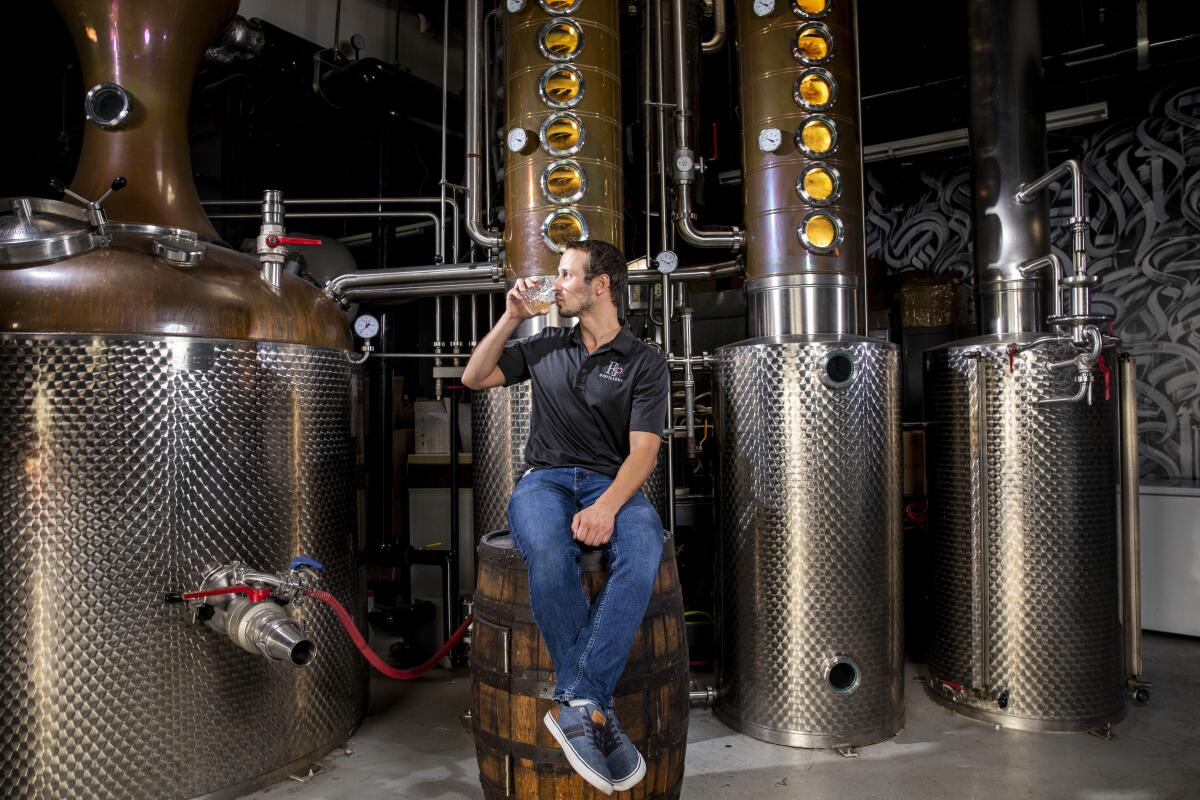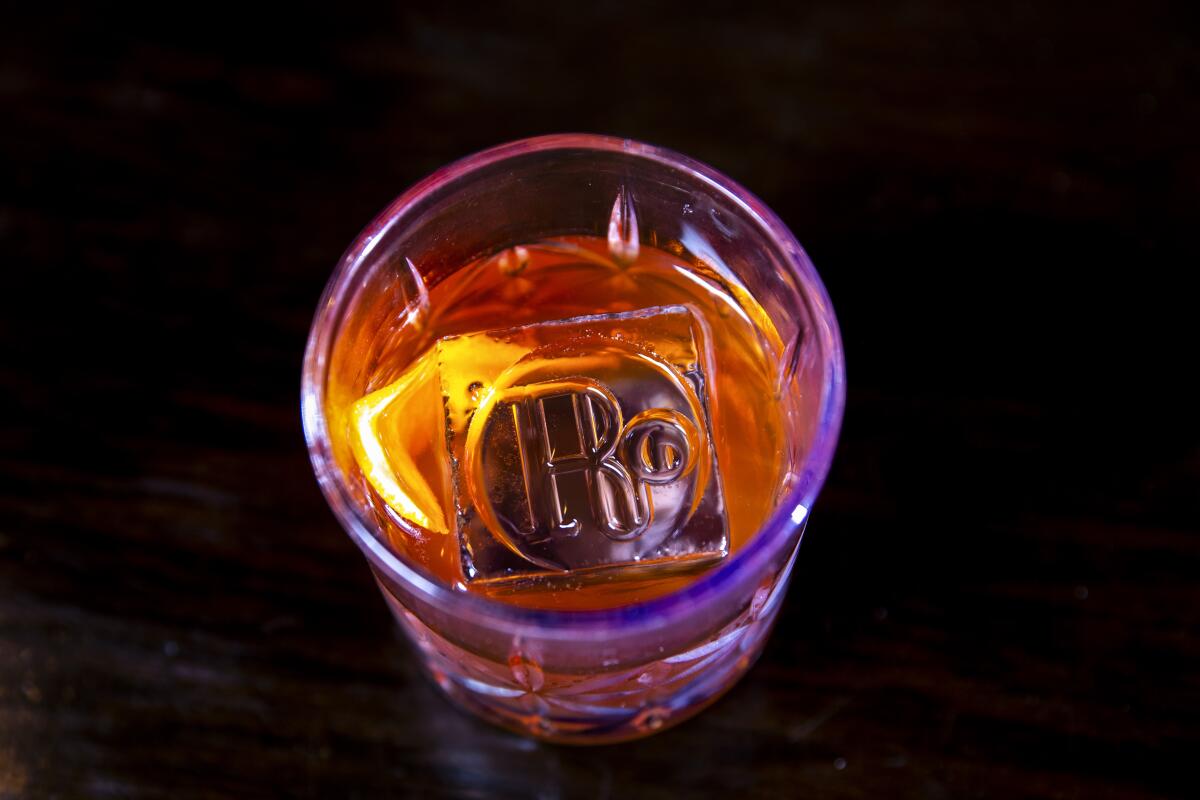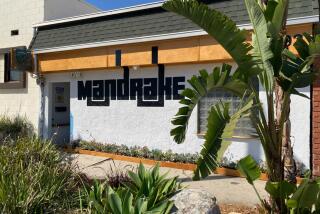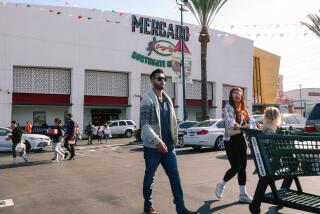El Segundo’s R6 Distillery eyes a massive Long Beach expansion

Since its 2014 founding, R6 Distillery has been housed in a 5,900-square-foot facility in El Segundo, where co-owner and head distiller Rob Rubens oversees an operation that can hand-bottle about 1,000 bottles of whisky, blue-corn vodka, gin and bourbon in a day — some of which regularly win notice in prestigious competitions. The building also includes a Prohibition-speakeasy-themed tasting room, where visitors can swing by for a boulevardier and a live cabaret show.
But Rubens has something grander in mind.
By next summer, he hopes to triple the size of his operation with a second distillery and barroom in Long Beach, which would allow him to continue manufacturing private-label spirits and canned drinks while burnishing his own brand. The new warehouse, clocking in at more than 18,500 square feet, will provide space for more drinking and eating — and a machine that can sanitize, fill and label 1,000 bottles in about 25 minutes.
Rubens, 35, says it took at least 12 months to find the right space, and he’ll have to spend a few more months transforming the property. Once it’s finished, it could include a barrel-lined dining room for private events or seminars or classes on distilling, and a central tasting room with several spaces available for private parties, one of which will sit on a mezzanine level and overlook the main floor.
The rooms would vary in aesthetic. While the El Segundo tasting room evokes 1920s swankiness, a tasting room in Long Beach might replicate an old-timey cigar lounge — dark, with button-back leather chairs; another space could be gleaming and bright. There won’t be a full-service restaurant, but Rubens says some food will be served and the menu is likely to be bacon-centric — to pair with his whiskys. Patio seating also will be on the menu. (Taking over a former U.S. Postal Service building has its perks, namely a large parking lot that can double as permanent alfresco space.)
“I think it’s going to be totally different than what you experience in El Segundo,” Rubens said. “Not good or bad, just different — and a lot more space.”
R6 Distillery primarily produces bourbon, aging the spirit for at least two years in charred white oak barrels and occasionally dabbling in Pedro Ximénez wine casks or maple syrup barrels for flavor experimentation. This year, R6’s Straight Bourbon won a silver medal in the San Francisco World Spirits Competition; in 2017, the distillery’s blue-corn vodka won silver there (and at the American Distilling Institute, as well).
One of the craft distillery’s primary focuses has been the manufacture of private-label spirits and canned drinks — some nonalcoholic—for celebrities or brands that don’t want to launch a distillery of their own. Rubens and his team help with recipe development, as well as the physical manufacturing and production of the spirits and labeling.
Rubens came to understand how lucrative private-label spirits could be when a friend already in the trade asked if he could help take on some of his workload. What began as an afterthought became almost a second operation entirely, though at times it’s meant prioritizing limited distillery space for private-label projects — and shelving R6’s own line.
The expansion could allow one outpost to focus on manufacturing while the other becomes somewhat of a barrelhouse for aging and testing. With room to play, Rubens says he could experiment with peated whiskys, or cherrywood-smoked whiskys and other limited-run products.
California’s wine boom in the ’70s and ’80s was mirrored by its craft-beer explosion in the ’90s and aughts, but it took nearly a century for its craft distilleries to gather speed post-Prohibition; the state’s comparatively high cost of land and industrial facilities, coupled with strict legal guidelines on taprooms and bottle sales, helped keep the movement at bay. In the last decade, California’s licensing evolved for craft distillers, making on-site sales easier and tastings more profitable. Rubens was one of the earliest craft distillers in Southern California’s new wave.
According to Ryan Friesen, vice president of the California Artisanal Distillers Guild and as head distiller at Blinking Owl Distillery in Santa Ana, there’s still room for more product, and there’s demand for the more creative bottles. “Consumers started to demand unique, different, interesting, harder to get, more niche, more local, better storied aged whisky, and that’s the driving force,” Friesen said.
Rubens “embodies a lot of what this industry has represented, and specifically about California,” he added. “I think Rob is a classic example of a guy who has a passion for spirits, first and foremost, and who then is trying to find the way to make that idea, that passion, turn into a business that makes sense,” Friesen said. “Everyone struggles with this, but Rob had a production side and a small tasting room ... he’s taken on interesting outside jobs but he still has his own brand.”

Rubens, born and raised in Chicago, spent several years working as a business consultant, providing strategy across a number of fields, including green energy, higher education and healthcare. He wanted to move west, and in 2011 his employer facilitated Rubens’ relocation to the L.A. area. But he soon came to understand that he wanted more creativity, more risk.
“It was a dark part of my life, where I was doing stuff that I really didn’t want to do anymore,” said Rubens of his former job. “I think that [unhappiness] was the push to jump off the cliff for something different and more entrepreneurial, which had always been a desire of mine.”
He was on a business trip in New Orleans when his sister-in-law suggested they tour Celebration Distillation (noted for its Old New Orleans Rum). Rubens was handed a welcome drink, learned about the history of rum and the distillery, and saw the watermarks still visible from Hurricane Katrina flooding. He saw the process and the craft. That experience, he says, provided the “lightbulb moment” he needed.
Soon after, a friend taught him how to home-brew beer, a precursor of sorts to distilling. The next logical step was looking for the hole in the beverage market, and he felt distilleries were the next big trend.
“Then it was just putting together the pieces to leave what appeared to be a really stable job and scrape together [my] life’s savings and create a craft distillery in one of the most expensive parts of the country,” Ruben said. “And [then] taking all of the lessons that I’d learned ... and just really go for it.”
He studied and practiced his craft at other distilleries, including Dry Fly Distilling in Washington and Koval Distillery in his hometown of Chicago. In 2014, he started R6.
He sees the creation of his business as a way to continue the Rubens legacy. In 1926, Rubens’ great-grandfather, along with his five brothers, debuted a popular Illinois theater company and left a lasting impression on generations of entrepreneurs in the family, including one who named his distillery — R6 —as a tribute to the six Rubens brothers and pours his line of spirits in a 1920s-themed speakeasy in El Segundo. Soon enough he’ll be pouring in Long Beach too.
R6 Distillery is expected to open its second distillery, at 601-621 Golden Ave. in Long Beach, in spring or summer of 2022.
More to Read
Eat your way across L.A.
Get our weekly Tasting Notes newsletter for reviews, news and more.
You may occasionally receive promotional content from the Los Angeles Times.







